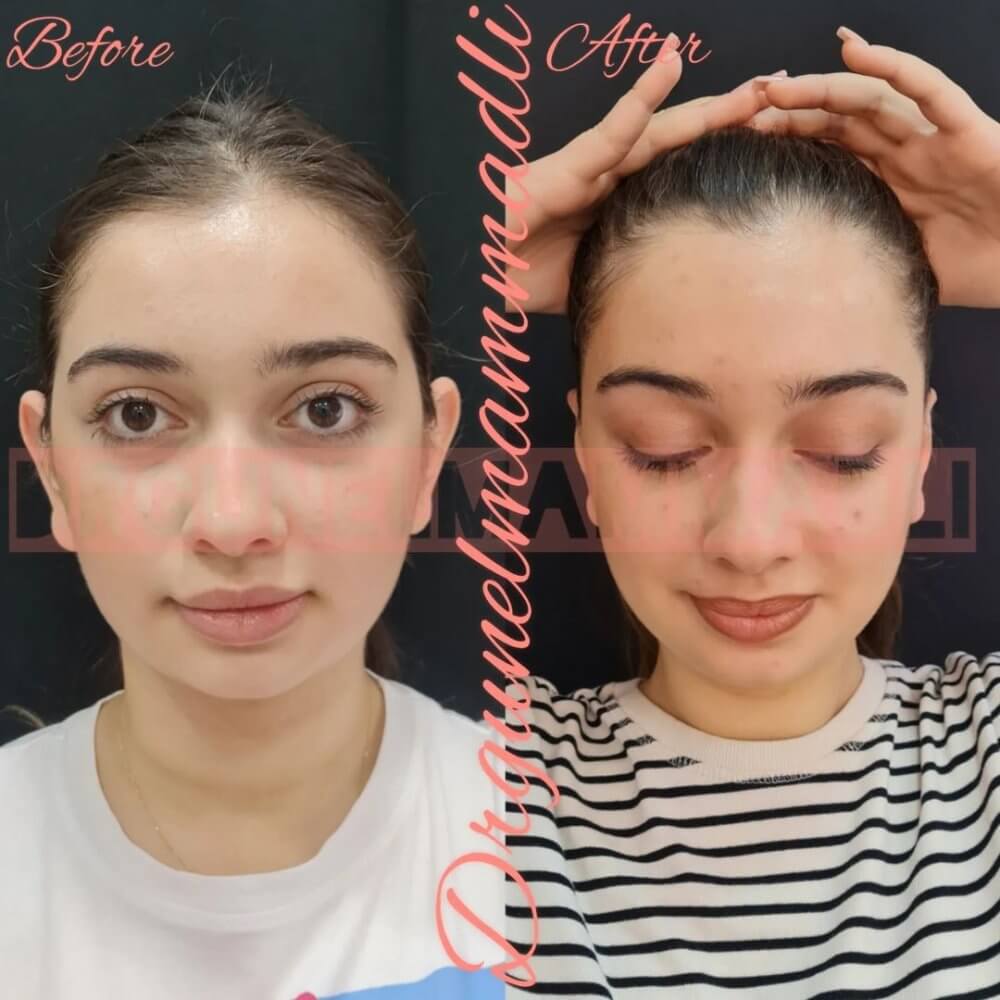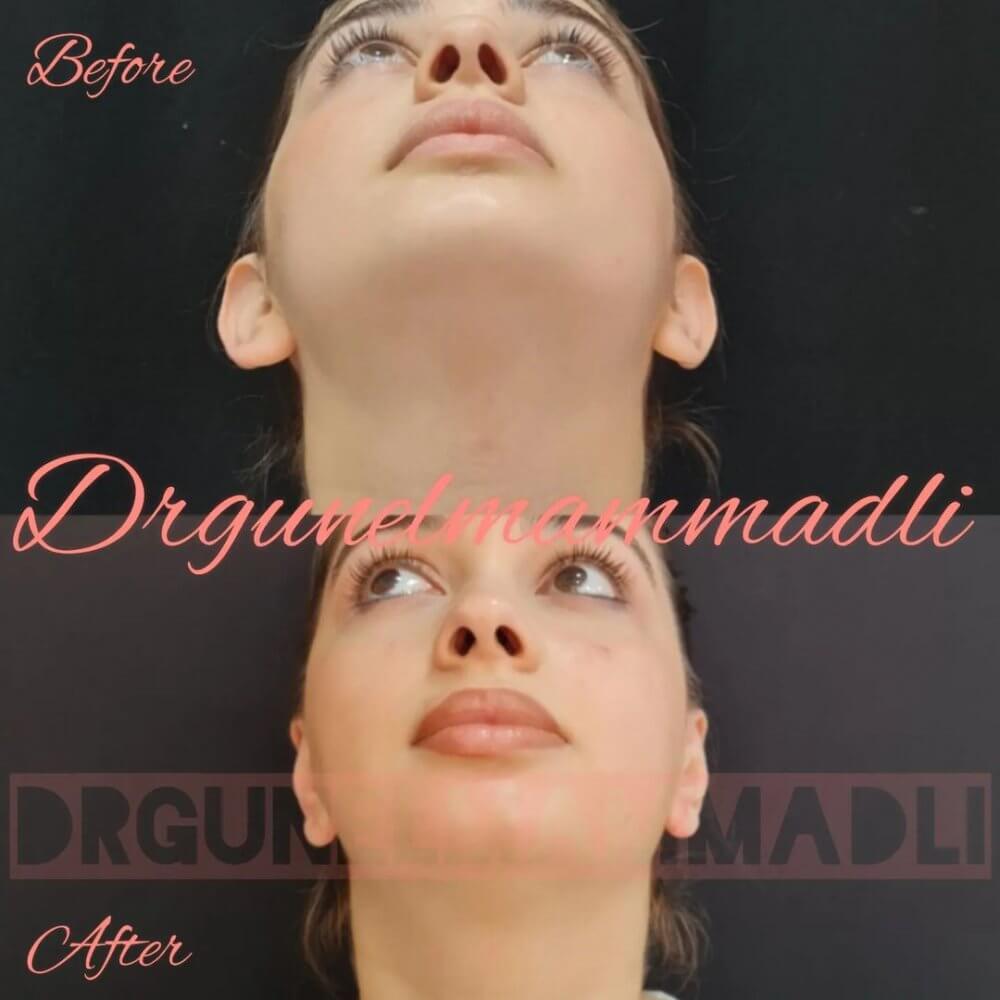Contents
- Michael Jackson Skin Color: The Truth Behind His Transformation
- Bella Hadid Before and After: What Cosmetic Procedures Has She Had?
- Scars After a Deep Plane Facelift
- Non-Surgical Facelift with Morpheus8: Advanced Skin Tightening
- Kesselring’s Lip Surgery ( Direct lip Lift)
- “Preservation Deep Plane Facelift™ by Dr. Mubariz” Natural, long-lasting rejuvenation using the most advanced anatomical techniques.
- From Hidden to Honored: A Neckline That Reflects Your True Self
- Azerbaijani Aesthetic Surgery on the Global Stage-Dr.Mubariz Mammadli
- Neck Lift Surgery cost, before and after, scars & more
Otoplasty - Cosmetic Ear Surgery
*Introduction:*
The size, shape, and position of one's ears can sometimes lead to self-consciousness. This issue affects both adults and children. Fortunately, today, this problem can be easily, quickly, and safely addressed through otoplasty surgery. Dr. Günel Mammadli performs otoplasty surgery, and you can view the results on his Instagram page at the end of this post.
*What is Otoplasty?*
Otoplasty, a cosmetic ear surgery, has a history dating back to ancient India in the 5th century BC. Over time, this procedure has evolved and become highly sought after. The good news is, you don't have to travel abroad for this surgery. Highly professional and experienced surgeons in Baku offer otoplasty training and services.
*Ear Reshaping Surgery - Otoplasty:*
Ear reshaping surgery, commonly known as otoplasty, pinnaplasty, or ear reduction surgery, encompasses various cosmetic procedures aimed at correcting ear and earlobe size and shape. Some individuals choose otoplasty to address structural abnormalities, while others seek it to reduce the protrusion of their ears from their head. These procedures transform sloping ears into aesthetically pleasing ones, ensuring that ear placement harmonizes with facial proportions. Otoplasty is also a safe and cost-effective solution for correcting ear trauma.

*Types of Otoplasty:*
Otoplasty comes in two main types: aesthetic and reconstructive.
*Aesthetic Otoplasty:*
Aesthetic otoplasty focuses on enhancing the appearance of the ears by correcting specific cosmetic defects. The criteria for normal ear appearance include:
1. The lower point of the ear aligns with the lower part of the nose.
2. The upper point of the ear and the outer eye corner fall on the same horizontal line.
3. The length of the auricle (earring) is 2 cm or less.
4. The angle between the nasal smoothness and the main body is not more than 30 degrees.
Aesthetic otoplasty addresses issues like excessive ear cartilage tissue, fleshy earlobe bulges, and extremely large helix, all of which are considered aesthetic defects in both children and adults.

*Reconstructive Otoplasty:*
Reconstructive otoplasty is a solution for patients with congenital defects, ear injuries, or trauma that affects the ears' appearance and functionality. Conditions such as microtia, microtia, anotia, auricle, and curl deformities fall under this category. This procedure involves complex operations, including modern correction methods, such as rib cartilage transplantation. It aims to restore both the outer ear's structure and the patient's self-confidence.
*Methods of Otoplasty:*
Otoplasty can be performed through different methods:
1. *Scalpel:* Although considered an older method, it is cost-effective. However, it may have a longer rehabilitation period and potential complications.
2. *Laser:* Laser otoplasty is popular for its precision, quick recovery, and minimal tissue damage.
3. *Radiograms:* This less common method uses radiation for incisions, ensuring minimal trauma, quick healing, and no visible scarring.
*Indications:*
Otoplasty is recommended in cases where:
- Ears protrude significantly from the head.
- Ears are disproportionately large.
- Dissatisfaction with previous ear surgeries exists.
- There are incomplete ear forms or helix (microtil) issues.
Otoplasty is suitable for individuals over the age of 5, once their ears have reached full size, and can be performed into adulthood.
*Contraindications:*
Certain conditions and diseases, such as bleeding disorders, diabetes mellitus, inflammatory ear diseases, infectious diseases, acute illnesses, oncological diseases, hepatitis, hemophilia, menstrual periods, and low immunity, may prevent otoplasty. Consultation with a healthcare provider is essential.
*Rehabilitation:*
Recovery after otoplasty is relatively short. Sutures typically heal within 10-14 days, allowing you to return to your daily routine quickly. Special ear wraps are recommended for the first 2-3 days, and they are used occasionally for a month. Mild pain can be managed with painkillers. Avoid touching or scratching your ears, and choose a sleeping position that doesn't put pressure on them. Wear clothing that doesn't require pulling over your head, such as button-up shirts.